Master Yan Luo’s head maps • frontal view and southwards looking

This page is viewed best with a large screen. 1 2 3 4 5 6 7 8 9 10 11 B ‘Master Yan Luo’s map of courting the perfected’ (Ti ke ge, 2b) 1 2 3 4 5 6 7 8 9 10 11 12 13 14 15 16 17 18 19 20 21 22 […]
The right kidney as the gate of life
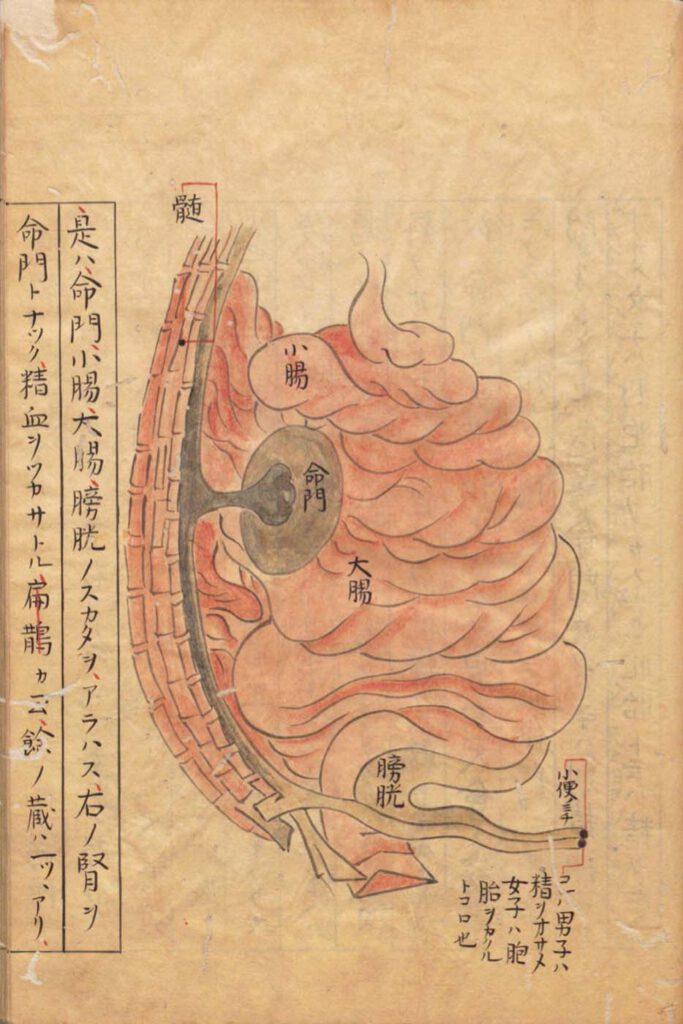
A B The Right kidney as the Gate of life. A No title. The right kidney as the Gate of life. Kajiwara Shōzen 梶原性全 (1265–1337) Man’anpo 万安方, 1315–27, scroll 54. Edo 江戸 period (1603–1868) manuscript. National Archives of Japan. B ‘The Right kidney as the Gate of life governs blood and essence and enters the […]
The Screen gate
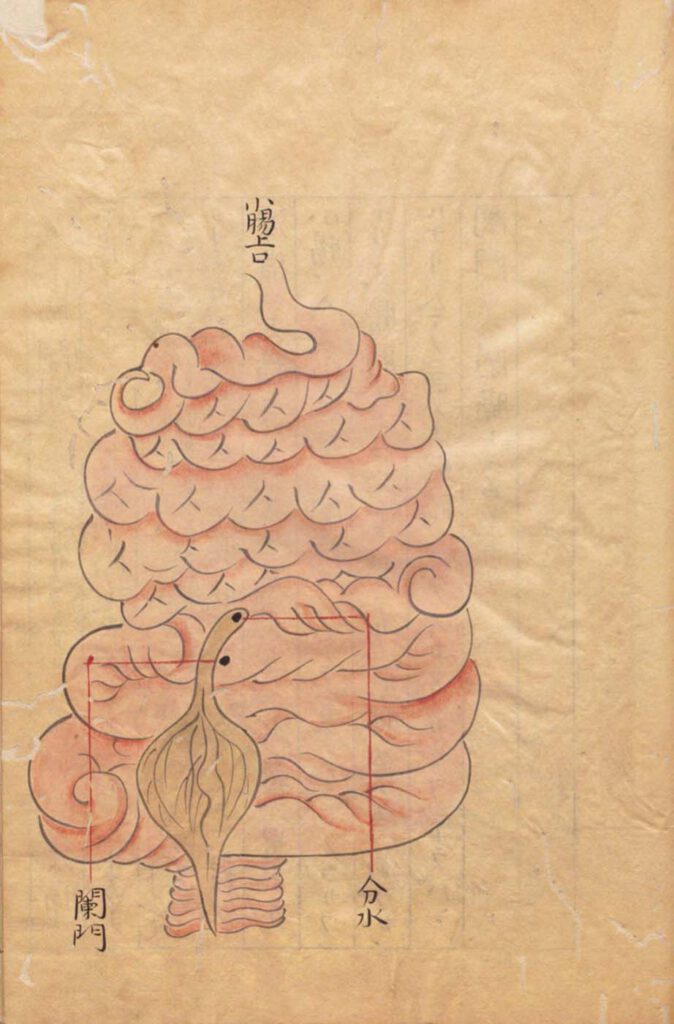
A B The Screen gate A No title. The Screen gate. Kajiwara Shōzen 梶原性全 (1265–1337) Man’anpo 万安方, 1315–27, scroll 54. Edo 江戸 period (1603–1868) manuscript. National Archives of Japan. B ‘Illustration of the Screen gate that separates water and grains’, Lanmen shuigu mibie tu 闌門水穀泌別圖. Wang Haogu 王好古 (1200–64?) The Great Teaching of Yi Yin’s Decoction […]
The spleen-stomach system

A B The spleen–stomach system A No title. The spleen-stomach system. Kajiwara Shōzen 梶原性全 (1265–1337) Man’anpo 万安方, 1315–27, scroll 54. Edo 江戸 period (1603–1868) manuscript. National Archives of Japan. B ‘Illustration of the spleen-stomach system’, Piweibao xi tu 脾胃胞系圖. Wang Haogu 王好古 (1200–64?) The Great Teaching of Yi Yin’s Decoction Classic Propagated by [Zhang] Zhongjing, Yi […]
The sea of qi and the diaphragm
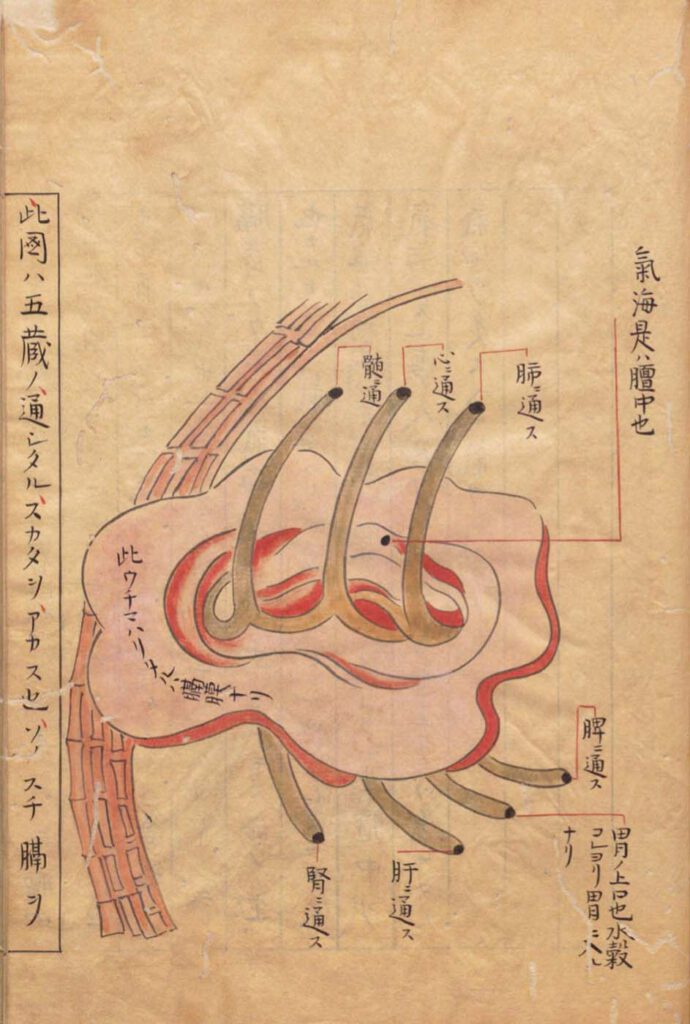
A B The sea of qi and the diaphragm A No title. The sea of qi and the diaphragm. Kajiwara Shōzen 梶原性全 (1265–1337) Man’anpo 万安方, 1315–27, scroll 54. Edo 江戸 period (1603–1868) manuscript. National Archives of Japan. B ‘Illustration of the sea of qi and the diaphragm’, Qihai gemo tu 氣海隔膜圖. Wang Haogu 王好古 (1200–64?) […]
Communication of the connectors of the five solid vessels with the heart.
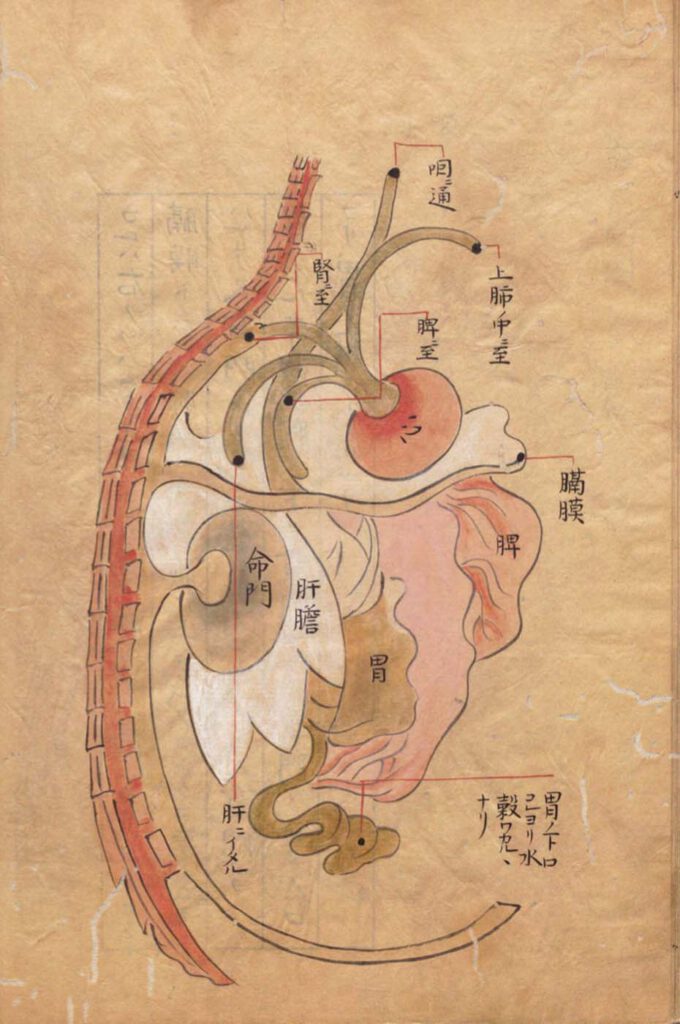
A B Communication of the connectors of the five solid vessels (wu zang) with the heart. A No title. Communication of the connectors of the five solid vessels with the heart. Kajiwara Shōzen 梶原性全 (1265–1337) Man’anpo 万安方, 1315–27, scroll 54. Edo 江戸 period (1603–1868) manuscript. National Archives of Japan. B ‘Illustration of the communication of […]
The Spleen and Stomach
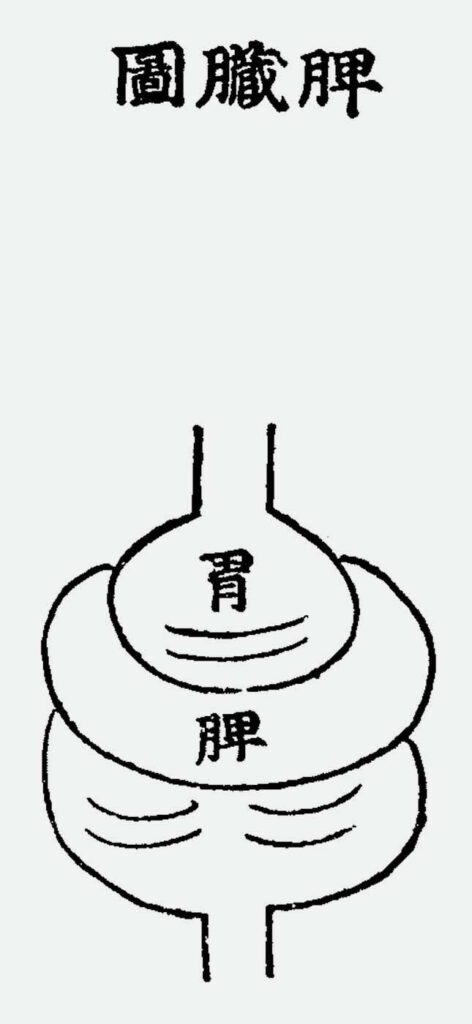
The Spleen and Stomach (from Hǒ Chun, Treasured Mirror of Eastern Medicine). – The spleen helps stomach ki 氣in digesting food and water. The stomach receives food while the spleen is responsible for digesting food. The five viscera and six bowels all receive ki from the stomach. Food passes through the stomach to the intestines. […]
The Body

The Body Diagram showing the location of the organs responsible for digestion, including spleen, stomach, small intestine, large intestine, and urinary bladder (from Hǒ Chun, Treasured Mirror of Eastern Medicine). – In the representative Korean medical text, Tongui Pogam 東醫寶鑑Treasured Mirror of Eastern Medicine (1613), Hǒ Chun explained the body, in Daoist and Buddhist conceptual […]
The Spleen
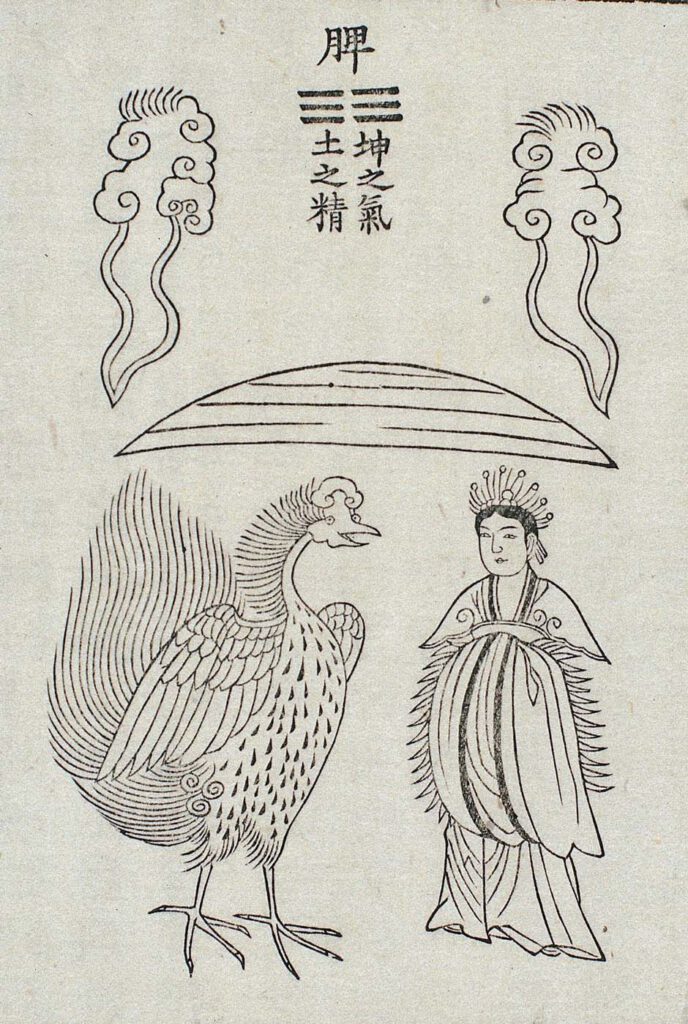
The Spleen organ responsible for digestion (from the Compilation of Medical Prescriptions). – This image appears in the Uibang Yuchwi 醫方類聚 (Compilation of Medical Prescriptions 1445). It draws inspiration from the Chinese physician Hu Yin’s (fl. 848) Huangting Neijing Wuzang Liufu Buxie Tu 黃庭內景五臟六腑補瀉圖(Diagram of the inner landscape of supplementing and reducing the five zang […]
Slate knife with two porpoises engraved

Slate knife with two porpoises engraved. Found at Teksdal, central Norway. Photo: Per E. Fredriksen, NTNU University Museum CC BY-NC-SA 4.0 – This single-edged knife of reddish-brown slate, or sandstone bears three engravings of fish or porpoises, two on one side (shown here) and one on the back. All three display the same internal patterning, a […]
